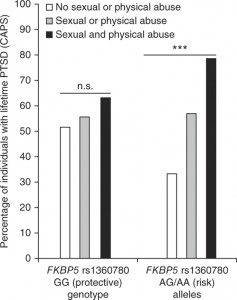Before all the excitement about embryonic stem cells, doctors were using hematopoetic – that is, blood-forming — stem cells. Hematopoetic stem cells can replenish all the types of cells in the blood, and are the centerpiece of transplantation as treatment for diseases such as multiple myeloma or leukemia. They can come from two different places: directly from the marrow of a donor’s hip bone, or indirectly from the donor’s blood after a drug nudges the stem cells out of the bone marrow.
Most hematopoetic stem cell transplants in the United States now use the indirect method of obtaining the stem cells. Until this fall, gold-standard randomized clinical trial results were not available to say which method is best for patient outcomes. Winship Cancer Institute hematologist Ned Waller was a key co-author of a study that was published in October in the New England Journal of Medicine addressing this question.
The trial involved 48 centers enrolling 551 patients as part of the Bone Marrow and Clinical Trials Network (BMT CTN). Waller helped design the study, and his lab at Winship analyzed the cells in each type of graft as the central core lab for the trial.
The study found no significant difference in the overall Ray Ban Italia survival rate at two years, and no difference in relapse rates or in acute graft-versus-host-disease (GVHD). However, there was a significantly higher rate of chronic GVHD with the use of blood stem cells.
GVHD, a difficult and sometimes life-threatening complication for this type of transplant, involves damage inflicted by the transplant recipient’s new immune system upon the liver, skin and digestive system.
This finding will generate serious discussion among leaders in the transplant field about whether bone marrow or peripheral blood stem cell transplantation is a better treatment option, Waller says. A text Q + A with him follows.
What was surprising about the results of this study?
The equivalent survival was expected, and the increased chronic GvHD in recipients of blood stem cell grafts was suspected. What is surprising is that the relapse rate was similar between the two arms, in spite of the PBSC arm having more chronic GvHD.
The accompanying editorial argues bone marrow should be the standard for unrelated-donor transplants. Do you agree?
Yes, with the exceptions that Fred mentioned: patients with life-threatening infections and patients at high risk for graft rejection.
What are the differences, procedurally, between bone marrow and peripheral blood as sources for hematopoetic stem cell transplant?
Donating bone marrow involves a two or three hour surgical procedure requiring general anesthesia, in which bone marrow is removed from the hip bone with a needle and syringe. For peripheral blood stem cells, the donor undergoes five days of injections of granulocyte colony-stimulating factor and then a four-hour apheresis procedure to harvest stem cells from the blood. Blood stem cell donors have bone pain during the 5-day period of cytokine treatment, and bone marrow donors have more discomfort early after donation, but symptoms for both BM and PBSC donors have typically resolved by four weeks after donation.
What proportion of each is now in use here?
Marrow is the graft source in about 25% of recipients of grafts from unrelated donors, 10% in recipients of grafts from related donors.
What proportion of HSCT is unrelated donor?
For allogeneic transplants, about 60% receive grafts form unrelated donors (33% matched related donors and 7% mis-matched related donors).
What kind of information does this study provide oncologists/hematologists about which option to use in which situation?
Marrow should be preferred in recipients of grafts from unrelated donors when the conditioning regimen is myeloablative [substantially damages the patient’s existing bone marrow].
Does it depend on the type of leukemia/myeloma, the age or other conditions of the patient etc?
This study only enrolled patients with acute leukemia and MDS [myelodysplastic syndrome]. It excluded patients with myeloma or lymphoma. Ages included children, adults up to 60.
What other types of studies in this area are being conducted at Winship?
We are studying the role of different constituents in the graft (BM and PBSC) to determine which are most important in shaping transplant outcomes (relapse, GvHD). We have an active pre-clinical research program utilizing mouse models to address specific questions related to engraftment cell homing and specific pathways related to immune activation. In addition, we will participate in a clinical trial of a new way of mobilizing blood stems that avoids the need for five days of G-CSF and uses a CXCR4 antagonist called plerixafor to mobilize PBSC. The properties of the plerixafor-mobilized PBSC may be more similar to BM cells with respect to GvHD.












